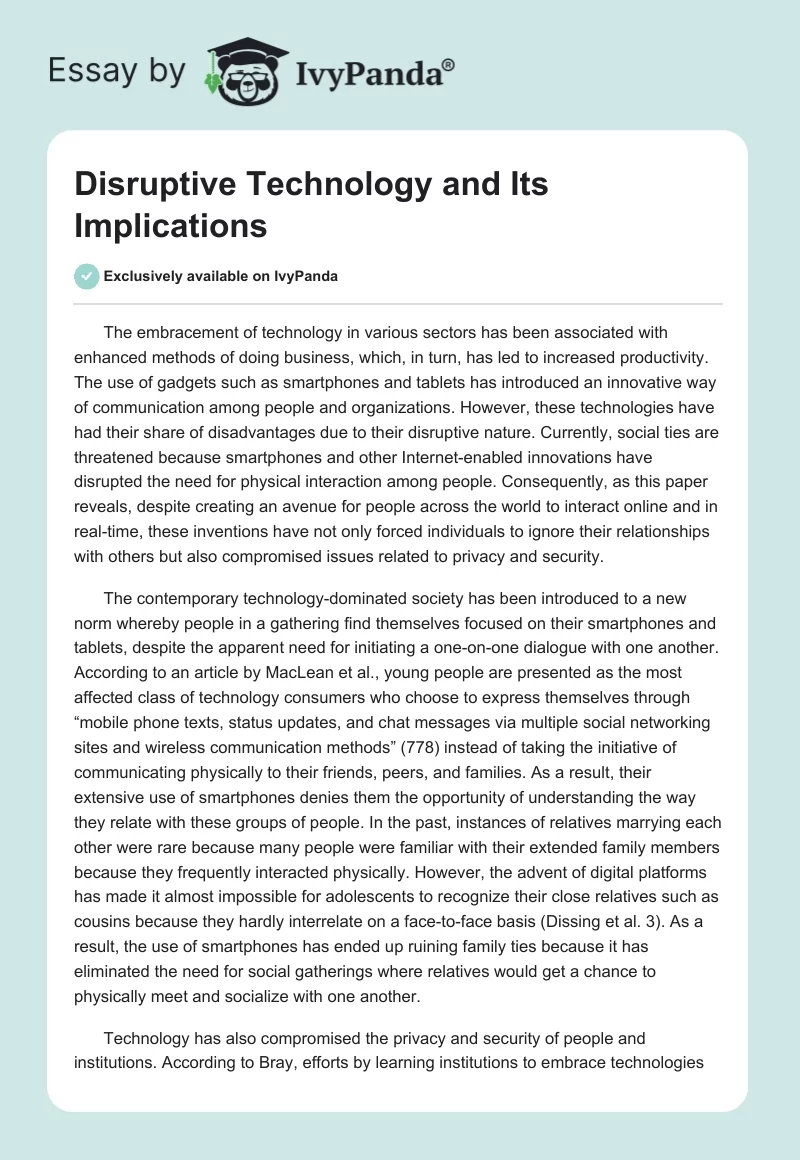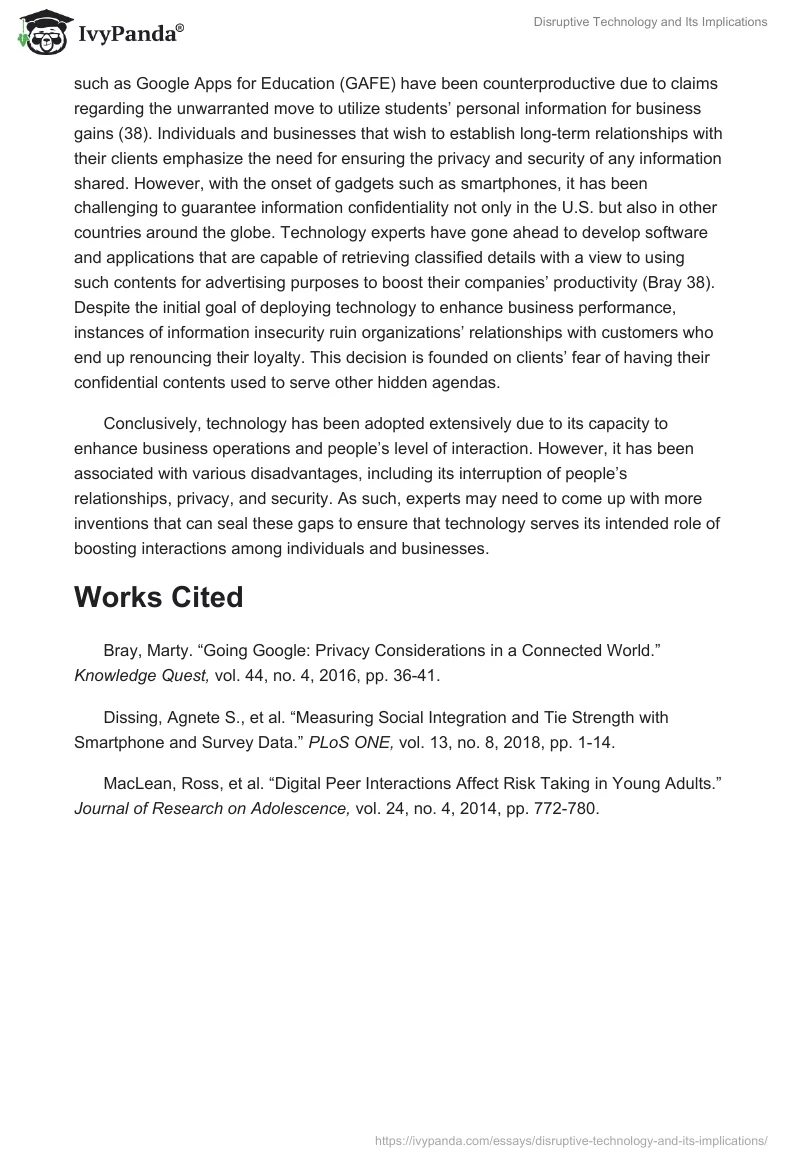The embracement of technology in various sectors has been associated with enhanced methods of doing business, which, in turn, has led to increased productivity. The use of gadgets such as smartphones and tablets has introduced an innovative way of communication among people and organizations. However, these technologies have had their share of disadvantages due to their disruptive nature. Currently, social ties are threatened because smartphones and other Internet-enabled innovations have disrupted the need for physical interaction among people. Consequently, as this paper reveals, despite creating an avenue for people across the world to interact online and in real-time, these inventions have not only forced individuals to ignore their relationships with others but also compromised issues related to privacy and security.
The contemporary technology-dominated society has been introduced to a new norm whereby people in a gathering find themselves focused on their smartphones and tablets, despite the apparent need for initiating a one-on-one dialogue with one another. According to an article by MacLean et al., young people are presented as the most affected class of technology consumers who choose to express themselves through “mobile phone texts, status updates, and chat messages via multiple social networking sites and wireless communication methods” (778) instead of taking the initiative of communicating physically to their friends, peers, and families. As a result, their extensive use of smartphones denies them the opportunity of understanding the way they relate with these groups of people. In the past, instances of relatives marrying each other were rare because many people were familiar with their extended family members because they frequently interacted physically. However, the advent of digital platforms has made it almost impossible for adolescents to recognize their close relatives such as cousins because they hardly interrelate on a face-to-face basis (Dissing et al. 3). As a result, the use of smartphones has ended up ruining family ties because it has eliminated the need for social gatherings where relatives would get a chance to physically meet and socialize with one another.
Technology has also compromised the privacy and security of people and institutions. According to Bray, efforts by learning institutions to embrace technologies such as Google Apps for Education (GAFE) have been counterproductive due to claims regarding the unwarranted move to utilize students’ personal information for business gains (38). Individuals and businesses that wish to establish long-term relationships with their clients emphasize the need for ensuring the privacy and security of any information shared. However, with the onset of gadgets such as smartphones, it has been challenging to guarantee information confidentiality not only in the U.S. but also in other countries around the globe. Technology experts have gone ahead to develop software and applications that are capable of retrieving classified details with a view to using such contents for advertising purposes to boost their companies’ productivity (Bray 38). Despite the initial goal of deploying technology to enhance business performance, instances of information insecurity ruin organizations’ relationships with customers who end up renouncing their loyalty. This decision is founded on clients’ fear of having their confidential contents used to serve other hidden agendas.
Conclusively, technology has been adopted extensively due to its capacity to enhance business operations and people’s level of interaction. However, it has been associated with various disadvantages, including its interruption of people’s relationships, privacy, and security. As such, experts may need to come up with more inventions that can seal these gaps to ensure that technology serves its intended role of boosting interactions among individuals and businesses.
Works Cited
Bray, Marty. “Going Google: Privacy Considerations in a Connected World.” Knowledge Quest, vol. 44, no. 4, 2016, pp. 36-41.
Dissing, Agnete S., et al. “Measuring Social Integration and Tie Strength with Smartphone and Survey Data.” PLoS ONE, vol. 13, no. 8, 2018, pp. 1-14.
MacLean, Ross, et al. “Digital Peer Interactions Affect Risk Taking in Young Adults.” Journal of Research on Adolescence, vol. 24, no. 4, 2014, pp. 772-780.


